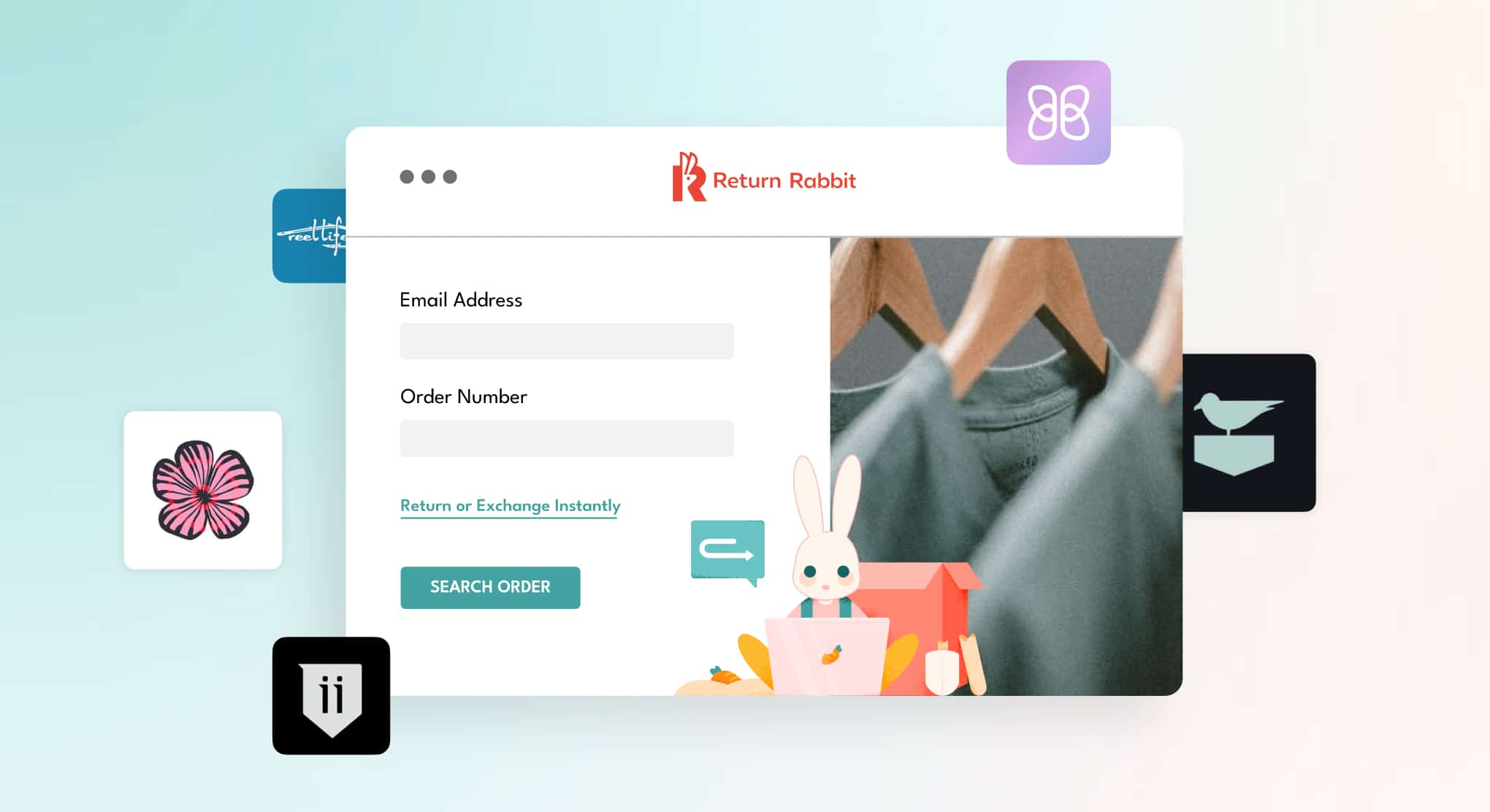The past couple of years have been a rollercoaster for eCommerce brands. The pandemic has changed how consumers shop and how brands operate. So what does the landscape look like this year? Here are the top 6 returns management trends for Shopify brands in 2022:
Volume of online returns will continue to rise
Online shopping has been on the rise for years so it’s no surprise that as online shopping continues to skyrocket, online returns will follow suit. In fact, in 2021 the average rate of returns for online purchases was 20.8% versus 18.1% in 2020.
Don’t forget about holiday returns! It was a record sales year for eCommerce brands this past BFCM and holiday season but with record sales comes record returns. Shopify stores alone raked in $6.3 billion in sales—a 23% increase from 2020. On average, retailers expect 17.8% of merchandise sold in November and December to be returned. That’s $158 billion in merchandise!
There’s a laundry list of reasons for online returns including items being damaged in transit, inaccurate sizing, or the product just looks different in person than it did online.
How do eCommerce brands combat ever increasing online returns? There are 2 key strategies you need to consider:
-
Implement an automated returns platform. When the return process is quick and painless, your customers are more likely to exchange their item and continue shopping with your brand.
-
Understand why your customers are returning items. Perhaps you need to adjust the size chart on a certain item, rewrite the product description, or update the photography. Taking a deep dive into return reasons is a major factor in decreasing your brand’s return rate.
Shoppers will expect low risk purchases and free return shipping
There’s nothing worse than the moment when you realize that you can’t return an item you bought online or if you can return it, having to pay return shipping. It feels personal and can ruin any chance of an ongoing relationship with your customers.
In 2022, customers are going to expect an easier, more convenient return process for all of their purchases. Whether it’s apparel or technology, customers are going to prioritize low risk purchases which means that eCommerce brands need to streamline the returns experience.
In today’s world, 79% of consumers want free product return shipping while only 49% of retailers actually offer free returns. The main reason brands don’t offer return shipping is because it’s thought to be too expensive.
Returns are already seen as a cost center and adding free return shipping on top of that is just unheard of! But here’s the thing, return shipping doesn’t have to put your brand out of business. Brands can make returns more cost effective by reusing packaging for returns and utilizing economical shipping methods.
Remember the saying ‘you need to spend money to make money’? That same mindset applies to returns management. By spending a little extra on returns, you’re instilling confidence in your brand and encouraging repeat purchases from your customers.
Supply chain disruptions will continue to drag on
One of the biggest disruptors in eCommerce last year was supply chain delays and we are sorry to report that this issue will continue in 2022. Material shortages are still very prevalent and will result in supply chain delays and empty shelves.
Ecommerce brands can combat this issue by prioritizing resilience and communication. These supply chain hurdles are forcing merchants to pivot and think outside the box when it comes to order fulfillment.
We have a few ideas for merchants who want to overcome supply chain challenges:
-
Set up temporary inventory warehouses for localized distribution
-
Implement automation tools so you can easily track inventory and manage shipping
-
Look into alternative suppliers to maintain your stock
Above all, be honest with your customers. Consumers highly value communication and transparency with the companies they show with. If an item is backordered or delayed due let them know immediately and give them options to either cancel or wait for their order. Supply chain issues have been widely communicated across all industries, so odds are as long as you give your customers a heads up, it’ll all be okay.
Optimizing return data will no longer be optional
Data is king and that theme will dominate 2022 for eCommerce brands. Understanding your data and business at a deeper level will indicate where you need to move the needle to improve your brand.
For returns management, brands will need to analyze returns data to optimize product offerings in order to minimize returns. If you’re wondering why a certain product isn’t performing well, digging deeper into the return reasons will help you solve that problem. Maybe the size chart needs to be updated or the product description didn’t list the fabric composition. Data that includes specific reasons for returns should be used to influence and improve product design and development.
Having the right data (and actually using it) can be the difference between a good brand and one that dominates.
Sustainable practices will drive eCommerce sales
Since the beginning of the pandemic, customers have become more conscious about how their buying decisions affect the planet.
Consumers are doing more research into the brands they shop with and are more likely to shop with brands that value sustainability. It’s true—a recent eMarketer study found that 89% of consumers think that brands should do more to reduce their carbon impact. 88% also believe that sustainability should be a standard business practice.
Sustainability is not a trend, it’s here to stay. A few best practices eCommerce brands can implement include:
-
Reducing packaging and energy consumption
-
Utilizing recycled materials
-
Shipping in bulk
-
Paperless invoicing
As always with eCommerce, everything comes back to communication. Let your customers know what your brand is doing to make an impact.
Consumers will expect faster (more like instant) refunds
Have you ever heard of the ‘Amazon effect’? Essentially it means that consumers prioritize fast and easy more than ever before, and that rings true with returns.
Think about it, customers pay for a product and receive it a few days later. But when they want to return an item, they have to wait a couple of weeks (or more!) to receive their refund. That surely puts a damper on the customer experience.
In 2022, brands will need to prioritize automating the refund process so customers can get their money back as quickly as they spent it.
A better returns management system is just a click away
Start 2022 with a bang, and 5x ROI on returns. Return Rabbit’s revenue-focused, exchange-first platform is just what you need to make 2022 the best year yet. Take a closer look at our platform.





